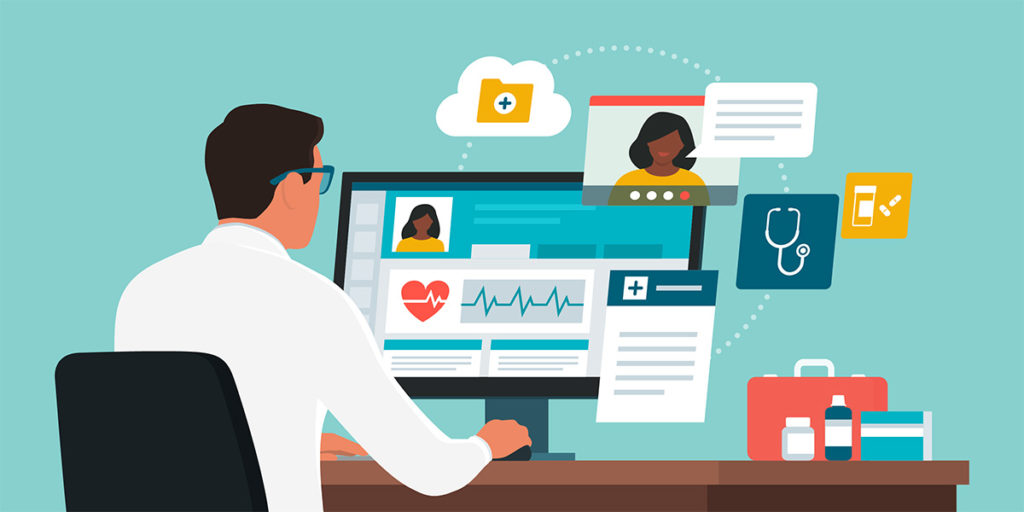Fifteen years ago, the concept of receiving medical care through a video call would have sounded like science fiction. But today, it’s a reality. Telemedicine is revolutionizing the way we receive healthcare, making it more convenient and accessible than ever before.
So what does the future of telemedicine look like? Here are the top predictions:
More People Will Use Telemedicine for Healthcare
Telemedicine is still in its early stages, but it’s growing rapidly. According to a report from Goldman Sachs, the global telemedicine market is expected to reach $130 billion by 2025. This growth is being driven by a number of factors, including an aging population, the rise of chronic diseases, and advances in technology.
As telemedicine becomes more mainstream, we can expect to see more people using it for healthcare. This will include not just patients but also providers such as doctors, nurses, and pharmacists.
There are already companies leading the charge in this industry. Namely, Nu Image Medical has been providing telemedicine services for years and has helped thousands of patients receive the care they need.
Under the leadership of CEO Andreas Dettlaff, the company has continued to innovate and expand its services. It now offers a comprehensive suite of telemedicine solutions, including 24/7 online consultations, men’s and women’s health, and more.
Telemedicine Will Be Used for More than Just Consultations
Traditionally, telemedicine has been used for consultations between doctors and patients. But in the future, we’ll see it being used for much more than that.
For example, there are already companies working on using telemedicine for things like mental health counseling, physical therapy, and even dental care. This is possible because advances in technology have made it easier to conduct these types of appointments remotely.
As telemedicine becomes more widely used, we can expect to see even more innovative uses for it. This will make healthcare more convenient and accessible for everyone involved.
Telemedicine Will Become More Personalized
One of the advantages of telemedicine is that it allows healthcare to be more personalized. That’s because providers can get to know their patients better when they’re communicating with them remotely. They can also use data from wearable devices and apps to get a better understanding of each patient’s health.
This personalized approach to healthcare will become even more important in the future as we move towards a system that is more focused on preventative care. By getting to know patients better, providers will be able to identify risk factors and offer tailored advice that can help prevent health problems before they occur.
Telemedicine Will Be Used to Treat More Conditions
In the past, telemedicine has mostly been used to treat minor conditions like colds and flu. However, as the technology advances, it will be used to treat a wider range of conditions. This includes mental health conditions, which are often difficult to diagnose and treat in person.
Telemedicine Will Be More Affordable
One of the biggest barriers to telemedicine is the cost. However, as the technology becomes more widespread, the cost will likely go down. This will make it more accessible to people who need it.
There Will Be More Connected Devices
Right now, there are a few connected devices that can be used for telemedicine. However, in the future, there will be many more. This includes things like wearable devices and smart home devices. These devices will collect data that can be used to improve your health.
The Future Is Looking Bright
There are a number of reasons why telemedicine is becoming increasingly popular. For one, it enables healthcare providers to reach patients in remote areas who might not otherwise have access to quality care.
Additionally, it allows for greater flexibility in terms of scheduling and appointments, as well as providing patients with more control over their own health.
Perhaps most importantly, though, telemedicine can help to improve health outcomes by providing timely access to care. A number of studies have shown that patients who receive care via telemedicine are more likely to adhere to their treatment plans and experience better health outcomes as a result.
Looking ahead, it is clear that telemedicine is poised to play an even bigger role in healthcare. Thanks to continued advances in technology, telemedicine will become more accessible and affordable, making it a viable option for even more patients.
All in all, the future of telemedicine looks bright!
